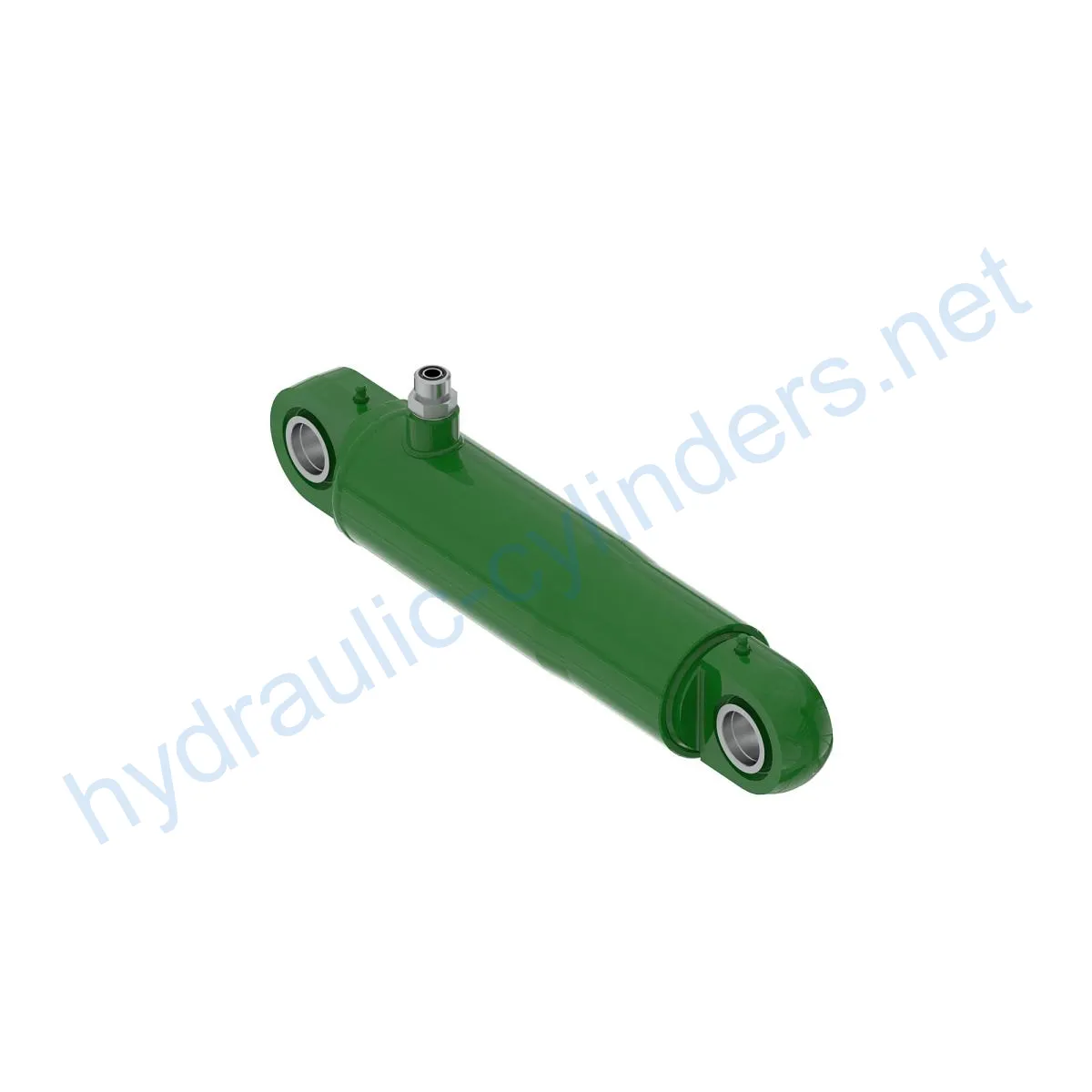Replacement Of AL213018 Lift Hydraulic Cylinder
Product Introduction
The Replacement Of AL213018 Lift Hydraulic Cylinder is a crucial component used in various models of machinery, including 6010, 6020, 6090 MC, 6100, and many more. This hydraulic cylinder plays a vital role in the smooth operation of equipment by providing the necessary lifting force. It is designed to withstand heavy loads and exhibit excellent durability.
Specifications and Models
Weight: 31.58 lb
Height: 3 in
Width: 5.2 in
Length: 18 in
Compatible Models:
- 6010
- 6020
- 6090 MC
- 6100
- 6110
- 6110L
- 6120
- 6120L
- 6130
- 6200
- 6200L
- 6205
- 6210
- 6210L
- 6215
- 6220
- 6220L
- 6230
- 6300
- 6300L
- 6310
- 6310L
- 6320
- 6400
- 6400L
- 6410
- 6410L
- 6415
- 6420
- 6500L
- 6505
- 6510L
- 6520
- 6620
Product Features
- Improved Equipment Performance: Replacing damaged or worn-out hydraulic cylinders can restore the normal operational capabilities of equipment, ensuring optimal performance in various applications.
- Enhanced Safety: Regularly replacing hydraulic cylinders can reduce safety hazards associated with cylinder failures, safeguarding both operators and equipment.
- Overload Protection: New cylinder designs often incorporate better overload protection mechanisms, enhancing overall safety.
- Quick Installation: Modern hydraulic cylinders are designed for easy installation and replacement, minimizing downtime.
- Standardized Components: Many hydraulic cylinders are standardized, making it easier to obtain replacement parts in the market.
Applications
This hydraulic cylinder finds applications in various scenarios, including but not limited to:
- Excavators: Replacing damaged or worn-out hydraulic cylinders on the arm or bucket of an excavator restores its operational efficiency.
- Cranes: Regular replacement of hydraulic cylinders in a crane’s boom ensures safe lifting and lowering operations.
- Tractors: Front-end loader hydraulic cylinders on tractors may develop leaks or experience performance degradation, requiring replacement.
- Harvesters: Hydraulic cylinders in harvesters are subjected to high pressures during harvesting, and timely replacement is necessary to maintain work efficiency.
- Automated Production Lines: Hydraulic cylinders are used to control robotic arms and other automated equipment. Immediate replacement is crucial in case of cylinder failure to avoid hampering production efficiency.
- Die Casting Machines: In high-pressure and high-temperature environments, hydraulic cylinders may experience performance degradation. Regular replacement ensures consistent product quality.
- Mining Equipment: Hydraulic cylinders are used for lifting and moving heavy loads in mining equipment. Regular inspection and replacement are necessary to prevent equipment failures.
- Bulldozers: The wear of hydraulic cylinders on a bulldozer’s blade can lead to reduced pushing power, necessitating timely replacement to maintain operational efficiency.
Maintenance Tasks
Regular maintenance tasks for the hydraulic cylinder include:
- Periodic Inspection
- Proper Lubrication
- Seal Replacement
- Calibration Check
Proper installation, lubrication, and adjustment are crucial to ensure the hydraulic cylinder’s performance. During installation, aligning the cylinder correctly is essential, and using suitable mounting brackets to secure the cylinder is recommended. Recommended inspection, repair, and replacement procedures, along with parts replacement and rebuilding services, contribute to extending the lifespan of the hydraulic cylinder.
Safety Considerations and Environmental Factors
When using hydraulic cylinders, safety measures are of utmost importance. Proper handling, maintenance, and adherence to safety guidelines ensure accident prevention and promote a safe working environment. Environmental factors should also be considered to prevent pollution and damage to the surrounding ecosystem.
Troubleshooting and Common Issues
Issues that may arise with hydraulic cylinders include:
- Leakage
- Insufficient Lifting Force
- Slow Operation
- Noise or Vibration
- Seal Failure
To address these problems, follow these tips and solutions for effective troubleshooting and problem-solving. Additionally, preventive measures can help minimize potential issues, ensuring optimal performance and longevity.

Design Considerations and Selection Criteria
When selecting hydraulic cylinders, various design considerations are essential:
- Load-Bearing Capacity
- Sealing
- Durability
- Safety
- Maintainability
These factors contribute to the overall performance and reliability of the hydraulic cylinder. Each aspect should be thoroughly discussed to ensure the selection of an appropriate and efficient product.
Sealing and Lubrication
Hydraulic cylinders utilize various sealing components, such as piston seals and rod seals, made from durable materials like polyurethane and nitrile rubber. The cylinder body and threaded ends undergo precise surface treatment to enhance wear resistance. Regular lubrication with suitable hydraulic oil is necessary to ensure smooth operation and longevity of the hydraulic cylinder.
Regular Inspection and Preventive Maintenance
Preventive maintenance measures include:
- Inspection at regular intervals
- Proper lubrication
- Seal replacement
- Calibration checks
Following correct installation, lubrication, and adjustment procedures are critical to the hydraulic cylinder’s performance. Providing guidance on aligning the cylinder correctly during installation and recommending suitable mounting brackets for securing the cylinder are essential. The article also includes recommended inspection, repair, and replacement procedures, along with tips to extend the hydraulic cylinder’s lifespan.
Product Installation Guide
Proper installation is crucial
参观我们的 VR 工厂
通过以下方式参观我们的 VR 工厂
液压缸应用:


